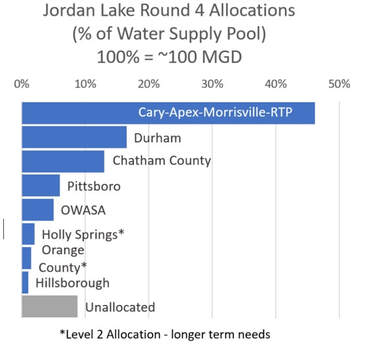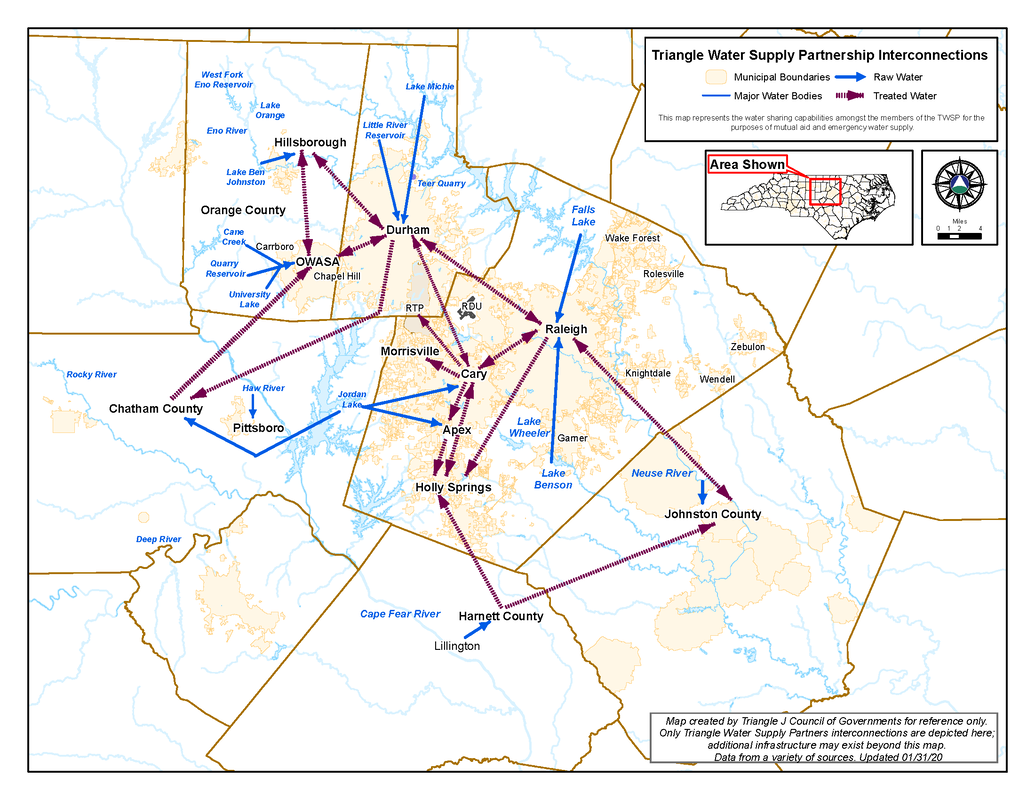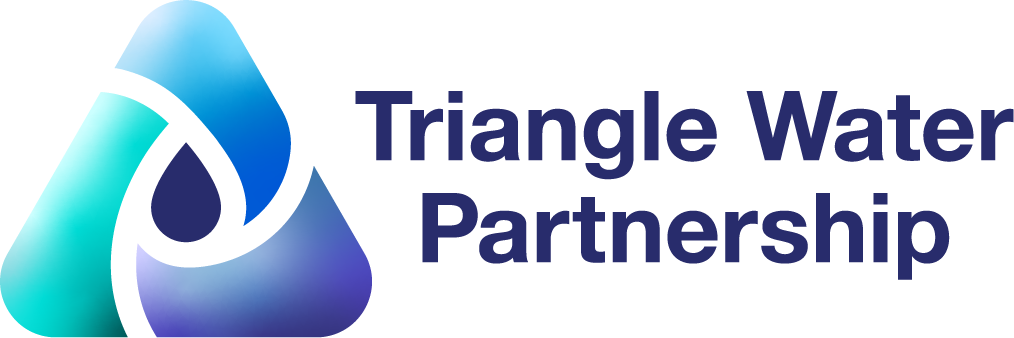WHAT WE DO
WHAT WE DO
The Triangle Water Supply Partnership (TWP) was formed in 2018 by 13 jurisdictions and water systems in the Triangle, wishing to continue and strengthen the valuable water supply planning work and collaborative efforts initiated by the Jordan Lake Partnership (JLP).
WHAT WE ARE DOING NOW
After the Jordan Lake Round 4 allocations were awarded, JLP redefined itself as the Triangle Water Supply Partnership, adding new members Johnston County and Harnett County. The new partnership intends to improve upon the previous work of the JLP and has identified the following projects as key opportunities for the next five years:
Distribution Model Infrastructure Update: This project will begin with an update to the interconnection model to include major changes in infrastructure as well as new partners and interconnections. Once updated, the model will be used to further understand the capabilities and limits of the Triangle Region's present water supply network. This effort supports regional reliability, resiliency, and redundancy (FY2021).
_______
Emergency Spill Response and Mitigation Plan Coordination: TWP is developing an appreciation for how each supplier's responses rely on coordination with partners in the region, in order to lay the framework for that coordination and pre-planning (FY2022).
_______
Triangle Regional Water Supply Plan: This plan will be more than a simple update of the original JLP plan. This new plan will include the larger TWP membership and a comprehensive evaluation of potential water sources (FY2023).
_______
Interconnections Model Maintenance: The Interconnections Model will be updated approximately every five years. The Regional Water Shortage and Response Planning Project will effectively update JLP’s Interconnections Model; therefore, the first anticipated occurrence of this project is FY2024.
_______
Distribution Model Infrastructure Update: This project will begin with an update to the interconnection model to include major changes in infrastructure as well as new partners and interconnections. Once updated, the model will be used to further understand the capabilities and limits of the Triangle Region's present water supply network. This effort supports regional reliability, resiliency, and redundancy (FY2021).
_______
Emergency Spill Response and Mitigation Plan Coordination: TWP is developing an appreciation for how each supplier's responses rely on coordination with partners in the region, in order to lay the framework for that coordination and pre-planning (FY2022).
_______
Triangle Regional Water Supply Plan: This plan will be more than a simple update of the original JLP plan. This new plan will include the larger TWP membership and a comprehensive evaluation of potential water sources (FY2023).
_______
Interconnections Model Maintenance: The Interconnections Model will be updated approximately every five years. The Regional Water Shortage and Response Planning Project will effectively update JLP’s Interconnections Model; therefore, the first anticipated occurrence of this project is FY2024.
_______
WHAT WE'VE DONE
Signature projects of the JLP include an award-winning Regional Water Supply Plan as well as an Interconnection Model. The timeline for these projects is shown below.

- The Triangle Regional Water Supply Plan (completed in 2014) included peer-reviewed demand projections through 2060 to develop proposed Jordan Lake water supply allocation requests. The analysis confirmed the requested allocations would not harm downstream water users, even in the event of droughts as severe as any recorded during the past 80+ years. The plan also outlined recommended paths forward for additional supply opportunities.
- Simultaneously, the Interconnection Model was also developed which identified existing and proposed interconnections between systems and modeled capacities and demands. The purpose of the study was to identify supply alternatives and responses to outages or water shortages. It was the first time regional water system information has been compiled and mapped to the hydraulic model level of detail.


